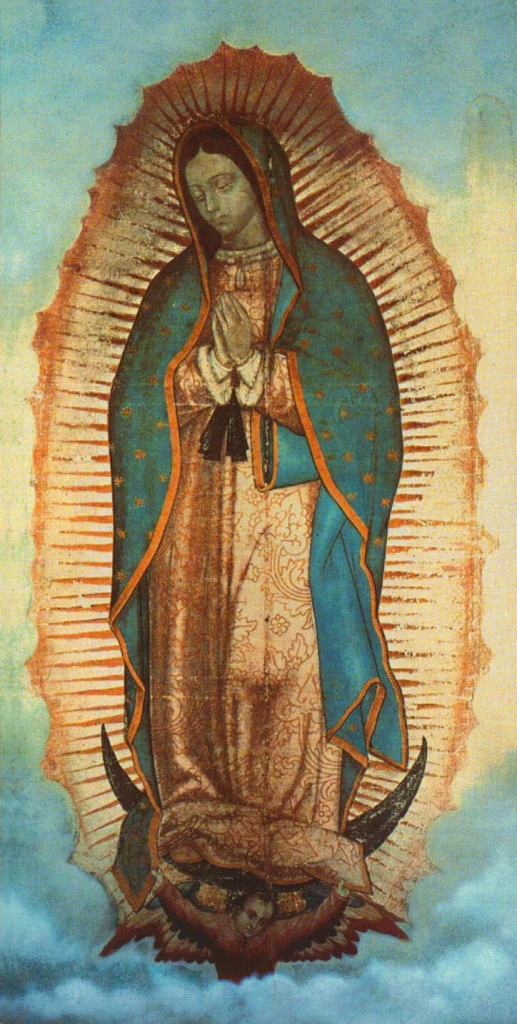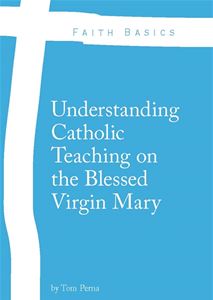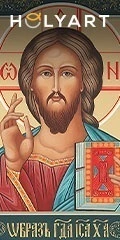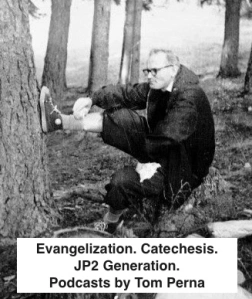Since this Thursday is the optional memorial for the Deacon and Doctor of the Church, St. Ephraem, I found it fitting to share with you some of his Marian writings. As an Early and Eastern Father of the Church, he was a supporter of Mary’s immaculate nature. St. Ephraem is often asked for intercessory prayers when it comes to supporting the dogma of the Immaculate Conception, which was declared solemn by the Catholic Church on December 8, 1854, through an ex cathedra statement given by Blessed Pope Pius IX.
The peak of Marian doctrine in the Syrian Church finds its full expression in the poetry of St. Ephraem, who is referred to as the ‘Harp of the Holy Ghost.’ His other title is – ‘Marian Doctor’, because of the large quantity of writings on Mary. It is believed that he wrote over three million lines of verse during his lifetime and many of those verses focused on the Blessed Virgin Mary. He is considered the greatest poet of the patristic age. Many of his lyrical writings focus on the beauty of religious and theological thought.
He particularly stresses the respect of Our Lady and her virtues. For St. Ephraem, his poetry isn’t just about writing and reciting, he states what is in his heart. His love for the Blessed Virgin Mary comes from the fact that they are both Christians and he believes that she is owed abundant amounts of admiration for who she is and who she brought into the world.
Now that we basically understand the saintly deacon’s poetic and Marian writing styles, let me briefly examine some his theological writings on Mary.
St. Ephraem knows that Mary is greatest creature ever created (Jesus is begotten and always is). For him, she brings great inspiration. In the quote below, he compliments the Son while also admiring the Mother –
“Only you [Jesus] and your Mother are more beautiful than everything. For on you, O Lord, there is no mark; neither is there any stain in your Mother.”
As light is reflecting in the eye, here St. Ephraem displays Mary as the one who reflects the Divine Light of Jesus, he who was conceived in her through the Holy Spirit and the cause of her immaculate perfection –
“The eye becomes pure when it is united with the light of the sun, and receives strength from its vigor and clarity from its splendor; it becomes radiant with its ardor and adorned with its beauty…In Mary, as in an eye, the Light has made a dwelling and purified her spirit, refined her thoughts, sanctified her mind, and transfigured her virginity.”
Here we have the Syrian Doctor focusing on Mary’s Motherhood, which he emphasized often in his writings on her –
“A wonder is Your mother: the Lord entered her and became a servant; He entered able to speak and He became silent in her; He entered her thundering and His voice grew silent; He entered Shepherd of all; a lamb He became in her; He emerged bleating.”
Another common theme in the poetry of the Syrian “Marian Doctor” is Mary as the Church; here we see the focus is on the great Sacrament, the Holy Eucharist,
“The Church gave us the living Bread, in place of the unleavened bread that Egypt had given. Mary gave us the refreshing bread, in place of the fatiguing bread that Eve had procured for us.”
St. Ephraem focused on the comparisons between Eve and Mary – where one brings death; the other brings life. Eve is the eye that is blind to the light; Mary is the eye that radiates the light of Christ –
“Behold the world! To it were given two eyes: Eve was the left eye, the blind eye; the right eye, the luminous eye is Mary. Because of the eye that grew dark, the whole world became dark. Then men, groping in the shadows, will consider every stone on which they stumble to be a god. They have called lies the truth.
But when the world once more begins to shine, by the other eye and the light of heaven taking up a dwelling in the cavity of this eye, then men will rediscover unity, perceiving that what they had found was the downfall of their lives.”
To learn more about St. Ephraem, the Harp of the Holy Ghost, I would suggest you read my blog post from 2014. I would also encourage you to read my blog post from last year focusing on one of his Marian prayers. Below is a rendition of his hymn to the Light. I don’t even understand it and I thought it was beautiful. I believe it is being sung in Arabic.
Source:
Gambero, Luigi. Mary and the Fathers of the Church: The Blessed Virgin Mary in Patristic Thought. San Francisco: Ignatius, 1999. Print.
Categories: Eastern Catholicism, Mariology









